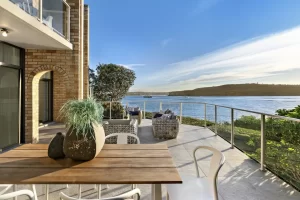House prices in some suburbs on Sydney’s northern beaches and the Gold Coast have doubled every three to four years in the past decade, fuelled by low levels of stock and a growing number of affluent buyers, data from Suburbtrends shows.
The more expensive housing markets with the median price above $2 million also outperformed, gaining 13.3 per cent each year on average in the past 10 years. This is more than twice the capital growth of 4.8 per cent posted by the affordable end of the market with a median price under $500,000.
“The premium end of the market performed strongly in the past decade, driven by scarcity, being located near the beach or the harbour,” said Kent Lardner, director of Suburbtrends.
“Housing inventory levels in these suburbs remained very low, especially in recent years. The increasing levels of wealth and low interest rates have also created near perfect conditions for so many of the country’s premium suburbs.”
The number of Australia’s ultra-rich individuals with net worth of $US30 million ($40 million) or more surged by 124 per cent over the last five years, and they have allocated nearly a third of their wealth on their homes or second dwellings during 2021, according to estate agency Knight Frank.
House prices in suburbs within the Manly area such as Balgowlah, Balgowlah Heights, Clontarf, Fairlight, Manly and Seaforth surged by 21 per cent each year on average during the past decade – essentially doubling every three years and five months. In the past 12 months alone, the median sale price across these suburbs surged by 45 per cent to $4.1 million.
Similarly, house values in the Broadbeach area on the Gold Coast have also doubled within four years, after surging 19 per cent each year on average in the past decade.
House prices across Broadbeach Waters, Burleigh Heads, Burleigh Waters, Mermaid Beach, Miami and Broadbeach jumped by 42 per cent to $1.6 million in the past year.
“Many of the commutable coastal locations boomed in the past 10 years and in the case of those near Sydney, we did see the ripple effect shifting demand from the eastern suburbs, spreading over to the north shore and up to the Central Coast,” Mr Lardner said.
“It is normal to see price gaps start to close between markets when this happens, but the premium markets kept on growing at phenomenal rates as well.”
Suburbtrends’ analysis took into account the median sale price of 330 house markets and 278 unit markets for the 12 months to March 2022 and compared them with the same period 10 years earlier. A percentage of growth rate was then calculated per market.
House prices in Sydney’s lower north shore and the eastern suburbs also performed strongly in the past 10 years, rising by 14.3 per cent and 13 per cent each year on average.
Noosa on the Sunshine Coast notched 14.7 per cent average annual growth over 10 years, while the Southern Highlands in NSW racked up 17.8 per cent.
A separate analysis by CoreLogic found the top-performing market segments were generally skewed towards houses over units.
“The stronger long-term performance for houses is a trend we have seen historically and is likely a reflection of the underlying land value being driven higher by scarcity factors,” said Tim Lawless, CoreLogic’s research director.
“House values will probably continue to appreciate faster than unit values due to the scarcity of supply and what is likely to be persistently strong demand for lower density housing options.
”Units located in prime locations and built to high specifications may be a sub-set of the market that outperforms as we see more mature-aged home owners looking for downsizing options.”
Hobart outperformed other cities with dwelling values surging 101.8 per cent across the greater capital city region over the 10 years to March 2022. Sydney was the only city to record a higher 10-year growth rate, with housing values increasing by 109.5 per cent according to CoreLogic.
Perth and Darwin were the weakest housing markets over the past decade, as values moved through a long-running downturn, Mr Lawless said.
“Some sectors of the market in these cities are still recording values that are well below their previous record highs,” he said.
But the worsening affordability and higher interest rates could slash capital growth by more than half in the next 10 years as buyers grapple with bigger household debt and lower borrowing capacity, said Mr Lardner.
“Australia’s property market bull run may end this year as the two decades of falling interest rates are about to end,” he said.
“The biggest impact is likely to be felt in the capital cities, where prices have made houses unaffordable for most first-home buyers.”
Shane Oliver, AMP Capital chief economist, said falling demand due to lower immigration could also weigh on house price growth in the coming decade.
“Apart from the last two years, the last decade has been characterised by very high levels of immigration and while it’s starting to pick up, it may not get back to the highs we saw pre-pandemic, so the underlying level of demand for housing may not be as strong as it has been,” he said.
The shift towards outer-fringe or regional housing demand could also shape the market in the next decade, Mr Lawless said.
“If we do see hybrid working models or remote working opportunities show some permanency, we could see regional markets remaining more popular than they were pre-COVID-19,” he said.
“Generally, those areas that are within a two-hour drive of the major capitals are the best placed to experience a permanent uplift in housing demand.”
This article is from Australian Financial Review, please click the following link for the original article: https://www.afr.com/property/residential/the-suburbs-where-prices-double-every-four-years-20220411-p5aclh




